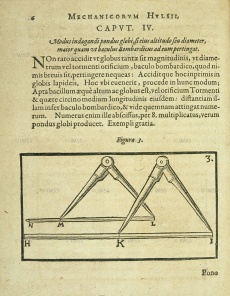Gunner’s Gauge
From Inventions
| Line 2: | Line 2: | ||
|nome= | |nome= | ||
| - | Name in use since the Renaissance (in Latin "baculus Bombardicus") with reference to the [[Cross-Staff]]. | + | Name in use since the Renaissance (in Latin "baculus Bombardicus") with reference to the [[Cross-Staff | Cross-staff]]. |
|descrizione= | |descrizione= | ||
Revision as of 12:01, 26 July 2010
Name in use since the Renaissance (in Latin "baculus Bombardicus") with reference to the Cross-staff.
Contents |
Historic Period
16th C.
Description
With the spread of firearms, special rules or cross-staffs designed for gunners were developed. They were slender sticks, made of wood or brass, often with a case, engraved with various scales of measurement for the preparation of artillery: divisions into equal parts for measuring the calibers and depths of cannon mouths, and scales of metals (iron, lead, stone) for calculating the quantity of gunpowder needed for cannonballs made of different materials.
Existing Instruments
Florence, Museo Galileo. Institute and Museum of the History of Science, inv. 695.
Florence, Museo Galileo. Institute and Museum of the History of Science, inv. 699.
Florence, Museo Galileo. Institute and Museum of the History of Science, inv. 631.
Florence, Museo Galileo. Institute and Museum of the History of Science, inv. 632.
Florence, Museo Galileo. Institute and Museum of the History of Science, inv. 620.
Florence, Museo Galileo. Institute and Museum of the History of Science, inv. 694.
Florence, Museo Galileo. Institute and Museum of the History of Science, inv. 657.
Florence, Museo Galileo. Institute and Museum of the History of Science, inv. 658.
Images
Author of the entry: Filippo Camerota



